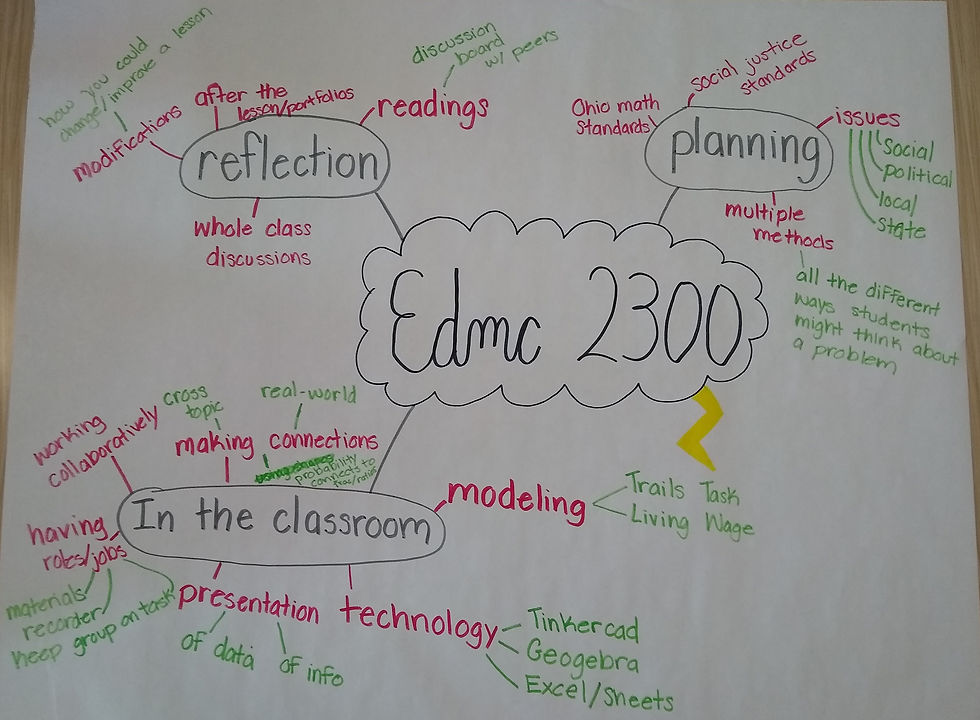Learning Styles are Bunk
- Matt Felton-Koestler
- Nov 30, 2018
- 2 min read
Most future teachers and current teachers believe in learning styles (like visual, auditory, and kinesthetic learners), but learning styles are bunk. I'm never sure how hard to push on this with teacher candidates because believing in learning styles is mostly benign. But as a teacher educator and scholar I think it's important to unpack what's happening here.
Let's start with this shortish video (about seven minutes), and then I'll talk a little about what this means for math.
Math is Ideas
One of the key points in the video is that most of what we want people to learn in school is meaning-based, or I might say idea-based. Mathematics is largely a collection of ideas that exist only in our minds. We try to express (or represent) these ideas with symbols, pictures, words, and physical materials, but those just provide a glimpse of the ideas, they are not the ideas themselves.
As a twist on the parable of the blind men [sic] and the elephant, imagine trying to understand everything about an elephant just by looking at it. You wouldn't know what noises it made or how rough its skin was. If you only use one modality you miss other important information about the elephant.
Math is similar, except that an elephant is a real-live thing we can interact with. I cannot see, hear, or touch the idea of "five". So I make up ways to represent it and make (part of) the idea accessible to other people. I get out blocks that kids can touch and count, I draw pictures of dots, I make a number line, I lead the class in counting from one to five and asking what comes just before and just after five, we explore many different ways to add numbers to make five (like two and three), I have kids count off and each fifth person sits down, etc.
None of these activities actually is five. But they provide us with "glimpses" of five from different perspectives. This is especially the case as we move into more advanced mathematics. The idea of a linear function can be represented with an equation (like "y = 3x + 2" or rewritten as "3 = (y - 2)/x"), a graph, a table of values, by tracing my finger along the graph, a description of a real-world situation that this graph models, and by gesturing with my arm to show a slanted line. But none of these are the actual function itself.
So What?
So please, do math in all kinds of modalities—by touching and moving, by talking and listening, by drawing and seeing—but do it because each of these provides a different perspective on the concept, not because you think some kids are auditory learners or some kids are visual learners.
Some kids may prefer certain kinds of activities and may gravitate towards certain strategies (like drawing pictures or writing equations), but they need to develop fluency in all the different ways of representing mathematical ideas.
Leave a Comment
Post a comment below, on my Facebook post, or on my Tweet.
Short URL: http://bit.ly/MatWLearningStyles



Comments